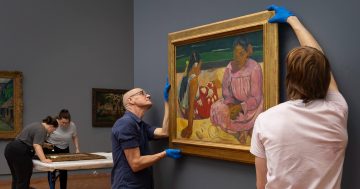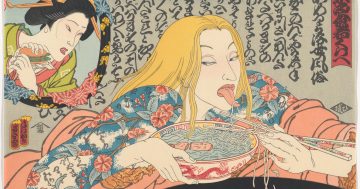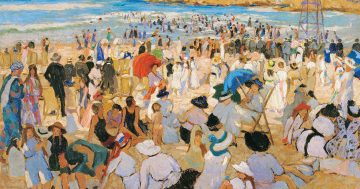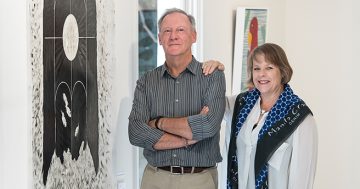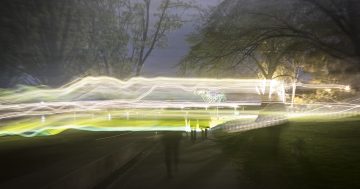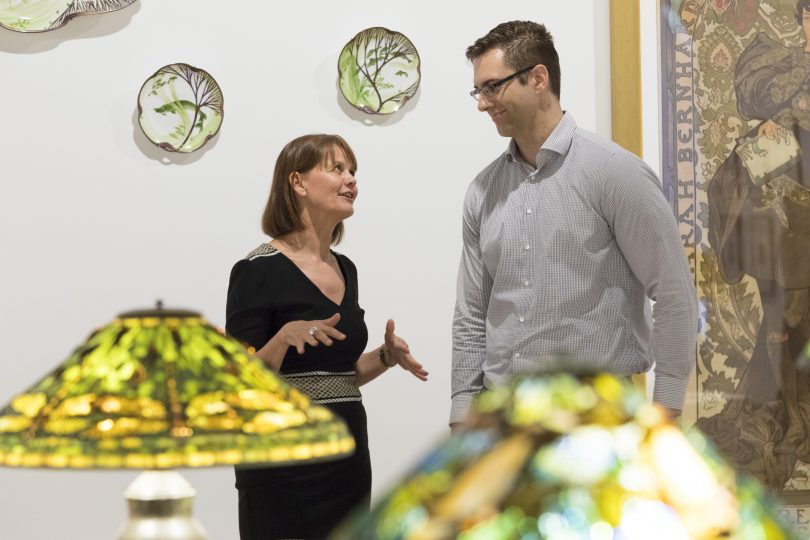
National Gallery of Australia program producer Adriane Boag with University of Canberra PhD candidate Nathan D’Cunha discussing the benefits of art for people with dementia. Photos: Michelle Kroll, Region Media.
Aged-care resident Prue Neidorf has always loved art and clearly remembers a portrait of her mother, drawn in the 1930s by an artist who was visiting Australia at the time.
Mrs Neidorf also has dementia, but you wouldn’t realise it while speaking to her about art.
She has been visiting galleries since she was a child, but it has been her recent visits to the National Gallery of Australia that has inspired talk of more than just the latest in abstract expressionism.
Mrs Neidorf is one of 28 people with dementia from local aged-care homes who view and discuss paintings at the Gallery.
This has also caught the attention of lead researcher and University of Canberra PhD candidate Nathan D’Cunha, who has undertaken research that shows art gallery programs can improve the wellbeing of people living with dementia.
The study monitored participants of the National Gallery of Australia (NGA) Art and Dementia program over six weeks.
Participants’ saliva was tested to determine levels of cortisol – best-known as the main stress hormone – as it plays an important role in regulating mood, the cycle of sleep and wakefulness, and blood pressure, among others. The study is the largest of its kind in the world to measure biomarkers.
Mr D’Cunha said that normal cortisol levels are usually high upon waking, then drop throughout the day and bottom out at bedtime. In people living with dementia, this rhythm is disrupted, resulting in increased frailty, agitation and decreased cognitive performance.
“The waking-to-evening salivary cortisol ratio improved after six weeks of attending the program, and returned to baseline levels at a later follow-up, indicating a more dynamic salivary cortisol rhythm in response to the intervention,” Mr D’Cunha said.
Mr D’Cunha said that while research focusing on a cure for dementia was important, initiatives that improved the quality of life for those living with dementia were just as crucial, particularly around social engagement.
It was reported that post-program, self-reported depressive symptoms decreased, and working memory and verbal fluency improved.
“Six weeks after the study, we asked participants what they remembered of the visits, and almost 50 per cent were able to recall specific aspects of the program,” Mr D’Cunha said. “Ninety-two per cent of those responded that they very much looked forward to the visits to the NGA.
“We believe our results are an important step towards a larger controlled trial which not only asks people living with dementia about their experiences of engaging in regular art discussion but also seeks to understand their physiological responses using non-invasive methods.”
The NGA Art and Dementia Program has been running since 2007, with program producer Adriane Boag at the helm. UC’s research collaboration with the National Gallery into the physiological benefits of the program is expected to continue.
“This research points to the future and supports what art professionals have known – that participating in a program at a gallery has positive effects on mental and physical wellbeing,” Ms Boag said.
Ms Boag said the Art and Dementia Program is significant for their outreach program.
“We have trained 40 galleries around Australia, especially in regional and remote areas. I think the spreading of this work has been really important, not only in this field but also nationally and internationally,” she said.
Prue Neidorf best sums up the feeling she gets when viewing art.
“Looking at art always makes me feel curious. I get bored very quickly if I don’t like something though,” she said.
“Art teaches the brain to look at things differently. If your brain gets a lot of stimuli, the brain and the eyes are happy, but the brain reacts so positively whether the eyes are happy or not.”
Mr D’Cunha will be presenting the findings of this study at the upcoming AAG National Conference and the Gerontological Society of America conference in Austin, Texas.
You can read the full paper Psychophysiological Responses in People Living with Dementia after an Art Gallery Intervention: An Exploratory Study.
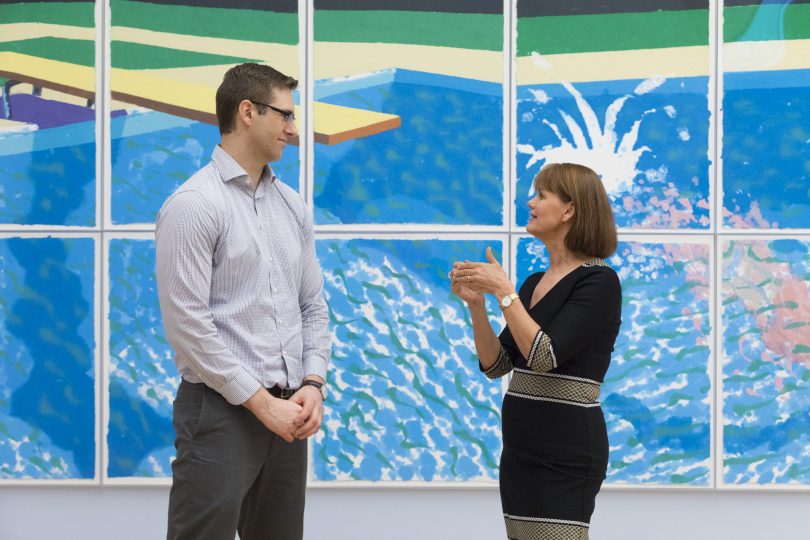
“Participating in a program at a gallery has positive effects on mental and physical wellbeing,” says NGA program producer Adriane Boag, with University of Canberra PhD candidate Nathan D’Cunha.
Original Article published by Michael Weaver on The RiotACT.


